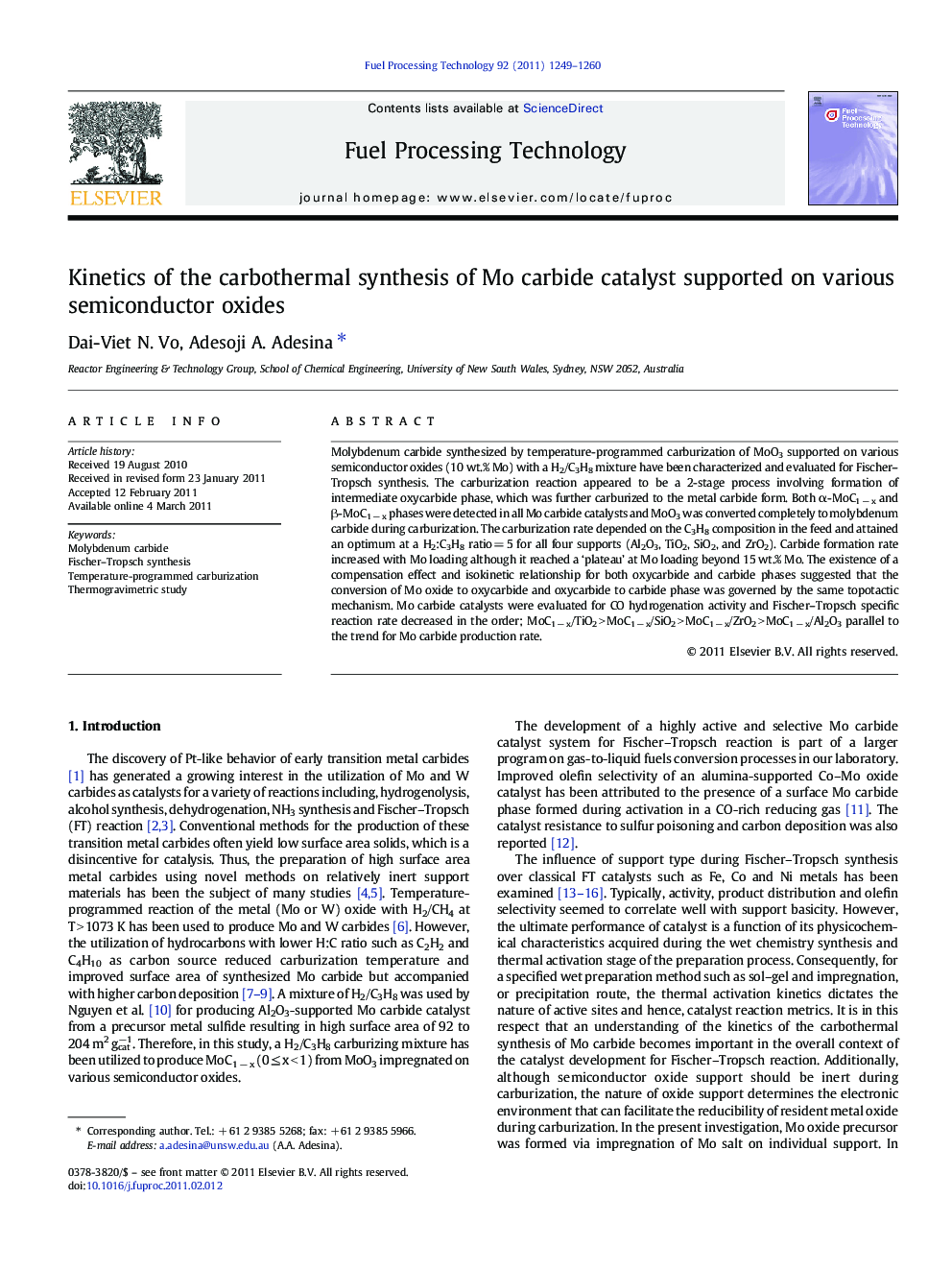| Article ID | Journal | Published Year | Pages | File Type |
|---|---|---|---|---|
| 210880 | Fuel Processing Technology | 2011 | 12 Pages |
Molybdenum carbide synthesized by temperature-programmed carburization of MoO3 supported on various semiconductor oxides (10 wt.% Mo) with a H2/C3H8 mixture have been characterized and evaluated for Fischer–Tropsch synthesis. The carburization reaction appeared to be a 2-stage process involving formation of intermediate oxycarbide phase, which was further carburized to the metal carbide form. Both α-MoC1 − x and β-MoC1 − x phases were detected in all Mo carbide catalysts and MoO3 was converted completely to molybdenum carbide during carburization. The carburization rate depended on the C3H8 composition in the feed and attained an optimum at a H2:C3H8 ratio = 5 for all four supports (Al2O3, TiO2, SiO2, and ZrO2). Carbide formation rate increased with Mo loading although it reached a ‘plateau’ at Mo loading beyond 15 wt.% Mo. The existence of a compensation effect and isokinetic relationship for both oxycarbide and carbide phases suggested that the conversion of Mo oxide to oxycarbide and oxycarbide to carbide phase was governed by the same topotactic mechanism. Mo carbide catalysts were evaluated for CO hydrogenation activity and Fischer–Tropsch specific reaction rate decreased in the order; MoC1 − x/TiO2 > MoC1 − x/SiO2 > MoC1 − x/ZrO2 > MoC1 − x/Al2O3 parallel to the trend for Mo carbide production rate.
Research Highlights► MoO3 carburization rate was optimal at feed H2:C3H8 ratio = 5. ► FT activity decreased as MoC1 − x/TiO2 > MoC1 − x/SiO2 > MoC1 − x/ZrO2 > MoC1 − x/Al2O3. ► Reaction rate has an optimum at yH2 = 0.67−0.75 depending on support type. ► MoC1 − x/Al2O3 catalyst was the most superior catalyst for total olefin selectivity.
